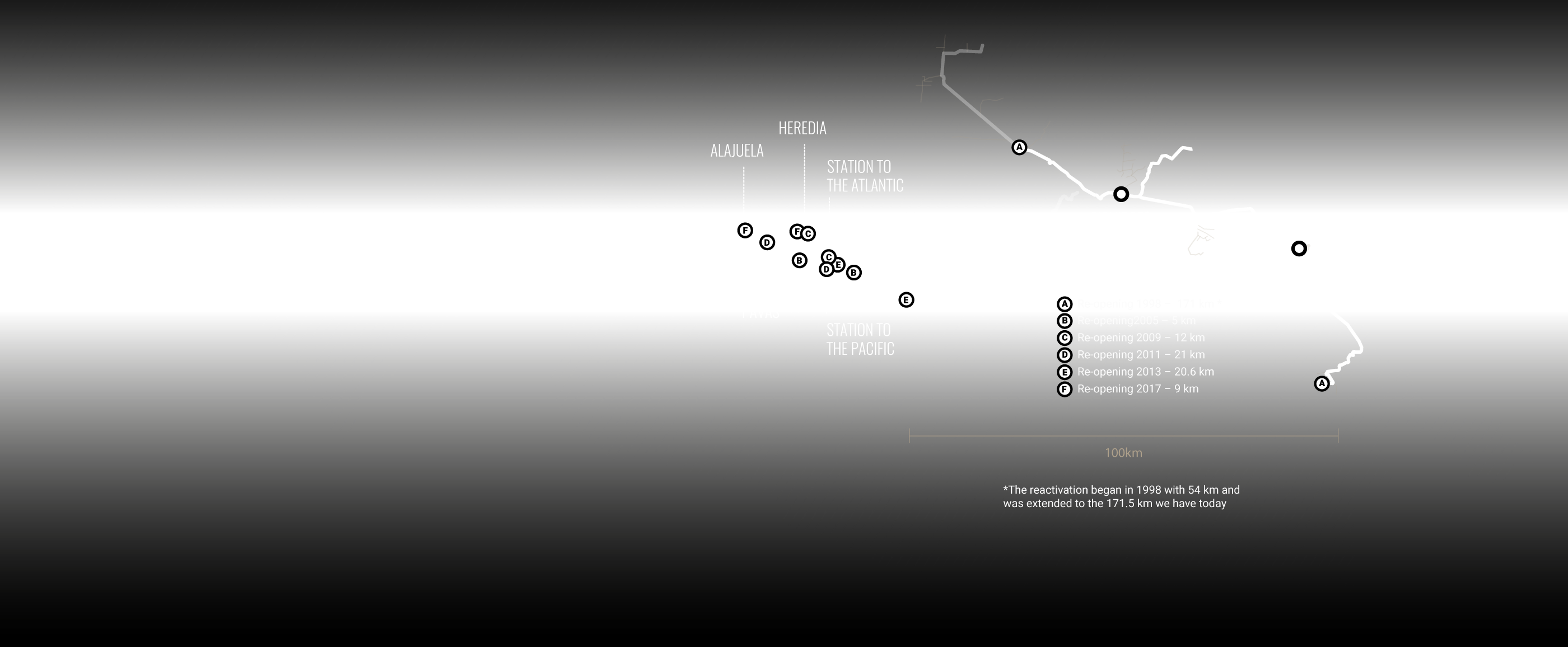Wednesday, 5 April, 2017
For this research the following sources were consulted:
Incofer (Instituto Costarricense de Ferrocarriles [Costa Rican Institute of Railways] Directing Council’s Minutes from 1985 to 2010, Minutes of the Directing Council of Fecosa (Ferrocarriles de Costa Rica) [Railways of Costa Rica, Fecosa, for its acronym in Spanish] from 1977 to 1985, Minutes of the Electric Railway to the Pacific 1949, Minutes of the Governing Council 1986-1987, Statistical Yearbooks of the Ministerio de Obras Públicas y Transportes [Ministry of Transport and Public Works, MOPT, for its acronym in Spanish], Archives of La Nación, Calderón, N., Solano A. & Ugalde, J. (2002). Análisis de las causas que llevaron al cierre del Instituto Costarricense de Ferrocarriles (Incofer) (Analysis of the causes that led the closure of the Costa Rican Institute of Railways), Year 1995. Ciudad Universitaria Rodrigo Facio (University city Rodrigo Facio)., Gómez, C. (1987). Análisis de la flota de transporte de carga en Costa Rica [Analysis of the cargo transport fleet in Costa Rica]. Graduation Project in Civil Engineering --Universidad de Costa Rica [University of Costa Rica –UCR, for its acronym in Spanish]. Faculty of Engineering, Department of Civil Engineering, 1987., Interviews to former presidents and former railway employees as well as to the deputy vice-minister of the presidency.
Project editing and direction: Hassel Fallas.
Research and scripts: Camila Salazar y Mercedes Agüero
Design and programming: Pablo Robles y Bryan Gutiérrez
Photography: Rafael Pacheco, Archivo La Nación, Warren Campos, Archivo de Incofer
UX: Fredy Guzmán
DATA GRUPO NACIÓN GN S.A 2017
CLOSE
PARTS
NOTES
Data Sheet
Watch video (8.24 min) >>
Project editing and direction: Hassel Fallas.
Research and scripts: Camila Salazar y Mercedes Agüero
Design and programming: Pablo Robles y Bryan Gutiérrez
Photography: Rafael Pacheco, Archivo La Nación, Warren Campos, Archivo de Incofer
Documentary: María Luisa Madrigal, Adrián Soto, Kenneth Barrantes, René Valenzuela y Mariana Artavia
UX: Fredy Guzmán
DATA GRUPO NACIÓN GN S.A 2017
Start >>
Twenty-two years after Incofer’s cessation of operations, trains have become a transport alternative in the city and in the Caribbean, despite being old and deficient. The reactivation of the cargo began in 1998, during the government of Miguel Ángel Rodríguez (1998-2002), while passenger trains had to wait until 2005.
Twenty-two years after Incofer’s cessation of operations, trains have become a transport alternative in the city and in the Caribbean, despite being old and deficient. The reactivation of the cargo began in 1998, during the government of Miguel Ángel Rodríguez (1998-2002), while passenger trains had to wait until 2005.
Between 1998 and 2016 283.5 kilometres of railway line have been reactivated. This represents a fourth of the total railway line, which has around 1,100 kilometres of extension.


The train’s operation carries today the same historical weakness: lack of resources to invest and give the necessary maintenance to the railway lines and the equipment. Today, Incofer still depends on voluntary government transfers and the income it could generate for the service provided.


A new law to strengthen Incofer approved in 2016, tried to remedy the dependency on state’s contributions, but it didn’t work. As in the eighties when the railway was denied the resources from the ‘banana’ tax, the current government didn’t want to give up a 5% of the fuel tax to give it to the train. Legislators did not accept to increase tolls, the circulation tax nor the selective consumption tax in order to create a fund to modernize the institution.
A new law to strengthen Incofer approved in 2016, tried to remedy the dependency on state’s contributions, but it didn’t work. As in the eighties when the railway was denied the resources from the ‘banana’ tax, the current government didn’t want to give up a 5% of the fuel tax to give it to the train. Legislators did not accept to increase tolls, the circulation tax nor the selective consumption tax in order to create a fund to modernize the institution.
“We were able to discuss the elimination of the single fuel tax, the 5% that was in a capitalization fund and the motion to create toll taxes and other proposals to generate income. Fortunately, the motion was not approved and we are glad that no more money will be charged to people in order to finance the train.”
“We were able to discuss the elimination of the single fuel tax, the 5% that was in a capitalization fund and the motion to create toll taxes and other proposals to generate income. Fortunately, the motion was not approved and we are glad that no more money will be charged to people in order to finance the train.”
Legislator Natalia Díaz, ordinary session of 01/26/2016
Nowadays, the lack of resources impedes Incofer to provide a good service while the project of the electrical metropolitan train, on paper since 1986, is executed. The institute requires funds to repair trains, purchase new equipment and replacement parts, and to rehabilitate more kilometres of track, to respond to the thousands of users who demand a better service every day.
Even though the new law gives Incofer the possibility to make public-private partnerships, to establish trustfunds or to issue securities, these financial mechanisms do not solve immediate needs, because their execution is complex. In addition, Incofer cannot use its assets to back up credits.
Even though the new law gives Incofer the possibility to make public-private partnerships, to establish trustfunds or to issue securities, these financial mechanisms do not solve immediate needs, because their execution is complex. In addition, Incofer cannot use its assets to back up credits.
"We are entitled to indebtedness, but everything has to be done through the Central Government and the State makes the transfer to Incofer. We cannot use properties or State assets as security", Christian Vargas explained.
"We are entitled to indebtedness, but everything has to be done through the Central Government and the State makes the transfer to Incofer. We cannot use properties or State assets as security", Christian Vargas explained.
The Government recognizes that the new law is insufficient and that Incofer requires resources to operate. That is why, since March 14, 2016 a new reform that would give the institution up to ¢ 15,000 million per year associated with an increase in vehicle circulation taxes, the selective consumption tax and tolls has been proposed in Congress. That proposal was the same one rejected by the legislators a year ago.
Despite the consensus on the need for an urban electric train, this has not been enough to get it going. The Fast Passenger Transport (TRP) project is already registered in the Ministry of National Planning, but it still has a long way to go. The plan consists of a two-way electric train, with overpasses connecting Alajuela with Paraíso and it would cost about $ 1.6 billion. The current government expects to have the trust fund ready for its construction and advance in the design before 2018. In the meantime, Incofer is creating another trust fund to buy new trains and improve the current service.
Despite the consensus on the need for an urban electric train, this has not been enough to get it going. The Fast Passenger Transport (TRP) project is already registered in the Ministry of National Planning, but it still has a long way to go. The plan consists of a two-way electric train, with overpasses connecting Alajuela with Paraíso and it would cost about $ 1.6 billion. The current government expects to have the trust fund ready for its construction and advance in the design before 2018. In the meantime, Incofer is creating another trust fund to buy new trains and improve the current service.
In 1981, while discussing the law that created Incofer, Tobías Vargas (deceased), a former legislator, envisioned the future:
"We cannot continue obtaining loans to build roads and forget about the railways we have and about planning new ones. We can get to the point where we find ourselves in great difficulty to manage the production and the movement of people."
Far from listening to him, the country changed the rails for the asphalt.
Today, with the streets suffocated by cars, many bet on the train to relieve the city from transit traffic. However, its modernization is still waiting in line among the many other government projects.